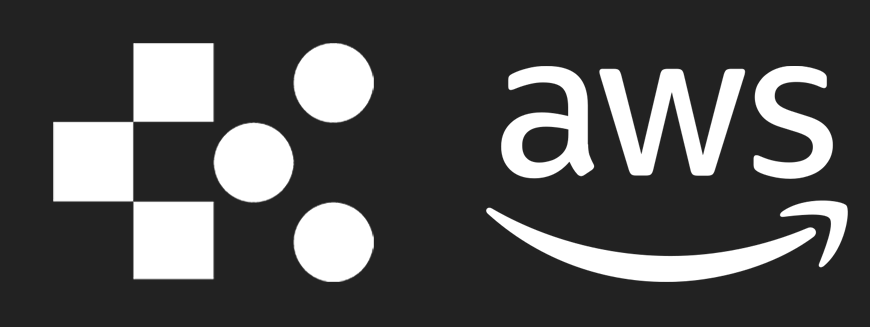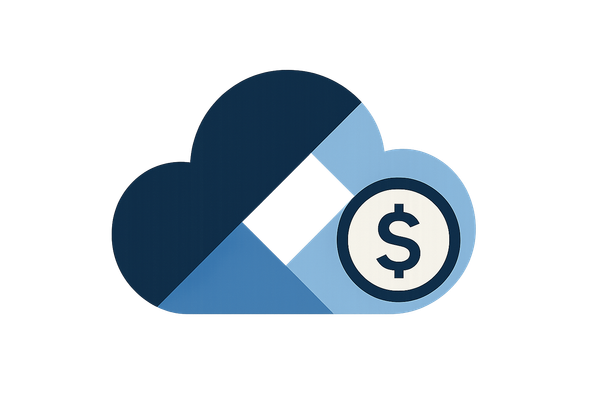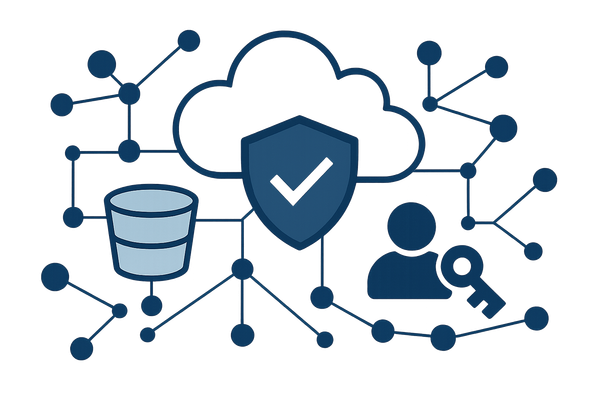Top Tools For Monitoring Idle AWS Resources
Learn how to effectively monitor and manage idle AWS resources to save costs and enhance efficiency for small and medium-sized businesses.
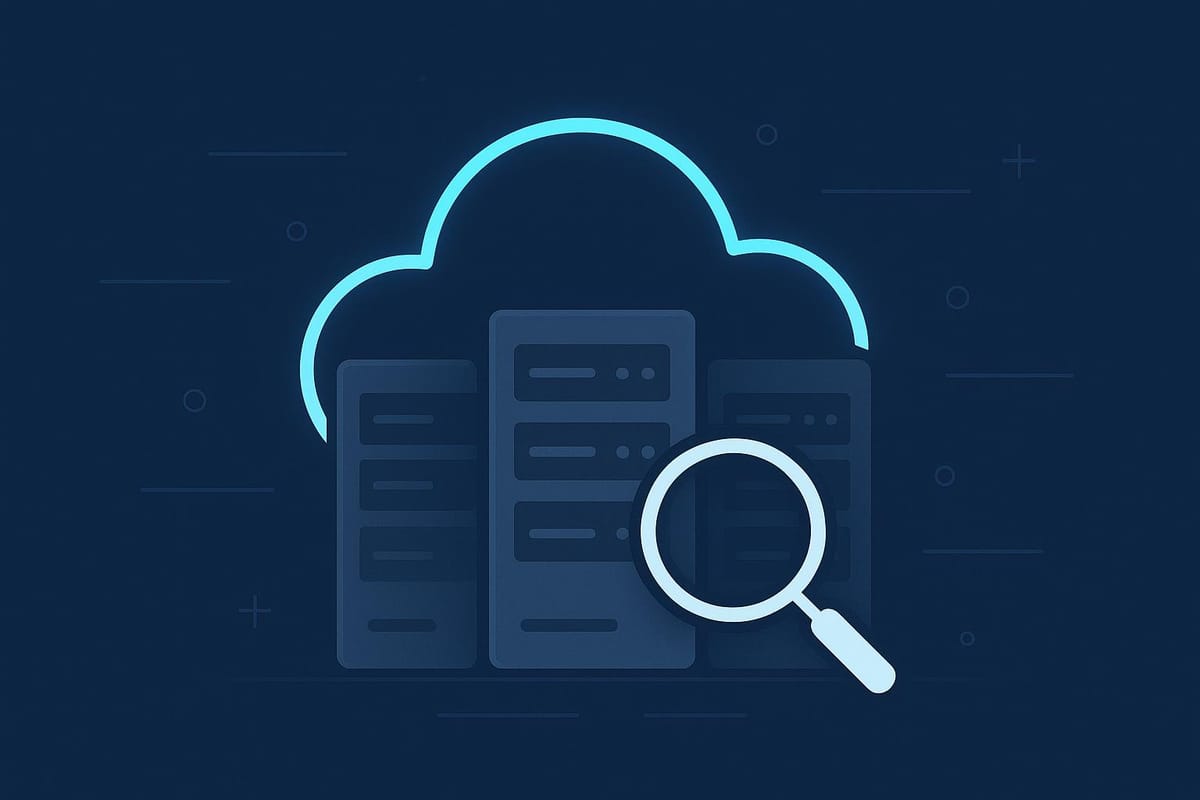
Idle AWS resources waste up to 32% of cloud budgets. For small and medium-sized businesses (SMBs) in the UK, this can mean hundreds or thousands of pounds lost annually. Tools to monitor and manage idle resources can help you save money, improve efficiency, and optimise your AWS infrastructure.
Key features to look for in monitoring tools:
- AWS Integration: Ensure compatibility with CloudWatch, Cost Explorer, and tagging systems.
- Automation & Alerts: Automate shutdowns and receive alerts for idle resources.
- Cost Analysis & Reporting: Identify waste, forecast budgets, and track anomalies.
AWS Native Tools:
- AWS CloudWatch: Tracks metrics like CPU usage and allows custom dashboards for monitoring trends.
- AWS Cost Explorer: Provides detailed cost breakdowns and forecasts.
- AWS Trusted Advisor: Offers recommendations to reduce costs, like rightsizing and removing unused resources.
Third-Party Tools:
- Lucidity: Focuses on storage optimisation, saving up to 70% on EBS costs.
- Zabbix: Open-source tool with multi-cloud support, ideal for advanced monitoring.
Quick Comparison:
| Feature | AWS CloudWatch | AWS Cost Explorer | AWS Trusted Advisor | Lucidity | Zabbix |
|---|---|---|---|---|---|
| AWS Integration | Yes | Yes | Yes | Limited | Limited |
| Automation | Alerts only | Budget alerts | Recommendations | Auto-scaling | Custom scripts |
| Multi-cloud Support | No | No | No | No | Yes |
| Cost | Pay-as-you-go | Free basic | Free with support | Paid | Free (open-source) |
How to Save on AWS Costs:
- Shut down idle resources like EC2 instances and RDS databases during off-hours.
- Use automation tools to optimise storage and scale resources.
- Regularly audit your AWS setup for unused volumes, load balancers, and snapshots.
- Leverage cost-saving options like Reserved Instances or Spot Instances.
AWS Cloudwatch Tutorial - How to Setup AWS Cloudwatch Logs?

What to Look for in Idle Resource Monitoring Tools
Picking the right monitoring tool can make a huge difference, potentially saving UK businesses hundreds of pounds each month. Without proper cost controls, small and medium-sized businesses (SMBs) in the UK often overspend by 30–45% on AWS services. To help you make a smart choice, we’ve outlined the key features to look for before diving into our detailed reviews.
By focusing on cost optimisation, many AWS users have successfully reduced their spending by up to 40%.
AWS Integration
For idle resource monitoring to be effective, seamless integration with AWS services is non-negotiable. Tools that work directly with your AWS setup provide more accurate insights and better data. Look for options that integrate with services like AWS CloudWatch, Cost and Usage Reports, and AWS Config. These connections allow the tool to understand how resources interact, monitor usage trends, and suggest actionable improvements.
Another useful feature is integration with AWS’s tagging system. This lets you track costs by department, project, or environment - especially helpful for UK businesses managing multiple internal teams or client projects.
Automation and Alerts
Automation and real-time alerts are game-changers for managing AWS costs. Let’s face it: manually handling resources just doesn’t scale, particularly for growing SMBs where team members wear many hats. The best tools can automate tasks like shutting down development instances after hours, resizing over-provisioned resources, or moving rarely accessed data to cheaper storage options.
Configurable alerts are equally important. These should notify the right people - whether via email, SMS, or platforms like Slack or Microsoft Teams - when costs exceed set thresholds. For UK businesses, the tool should also adapt to local usage patterns, such as higher traffic during peak hours, to avoid misinterpreting active resource use as idle.
Cost Analysis and Reporting
Turning complex usage data into actionable insights is where cost analysis and reporting come in. Many organisations are now empowering engineers to make cost-saving decisions through smarter monitoring and automation.
Key reporting features to look for include:
- Granular cost allocation: Assign specific expenses to teams or projects for better accountability.
- Budgeting and forecasting: Use historical data to set realistic budgets and predict future spending, which is crucial for handling seasonal changes or scaling up.
- Anomaly detection: Quickly flag unexpected spikes in costs to address issues before they escalate.
For businesses in regulated industries, compliance reporting is a must. It ensures that cost-saving measures don’t compromise data residency or security standards. Additionally, tools that offer practical recommendations - such as identifying idle resources or suggesting rightsizing - can make a big difference in keeping costs under control.
These features will be explored in greater detail in our upcoming reviews of AWS’s built-in tools and third-party monitoring solutions. Stay tuned!
AWS Built-in Tools for Monitoring Idle Resources
AWS offers several built-in tools designed to help UK SMBs identify and manage idle resources without additional cost. These tools are particularly useful for businesses just starting with AWS or those wanting to stay within its ecosystem. Here’s a closer look at three AWS tools that provide valuable insights into managing idle resources.
AWS CloudWatch
CloudWatch is AWS's main monitoring service, giving you real-time insights into how your resources are being used. It gathers and tracks metrics from AWS services, making it a go-to tool for spotting underused resources.
This service automatically collects data from your AWS resources and stores it for up to 15 months, allowing you to analyse long-term usage trends. For SMBs, this extended data retention is especially helpful for identifying seasonal usage patterns or planning for future capacity needs.
CloudWatch excels at monitoring key metrics that can point to idle resources. For instance, it tracks CPU usage, network activity, and disk performance for EC2 instances. RDS databases can be monitored for connection counts and read/write operations, while EBS volumes can reveal usage patterns through IOPS data. Custom dashboards let you combine these metrics, making it easier to identify trends across your infrastructure. You can also set alarms to alert you when metrics drop below certain thresholds for extended periods. For businesses with fluctuating workloads, this data can guide decisions about when to scale resources automatically instead of keeping them running continuously.
AWS Cost Explorer
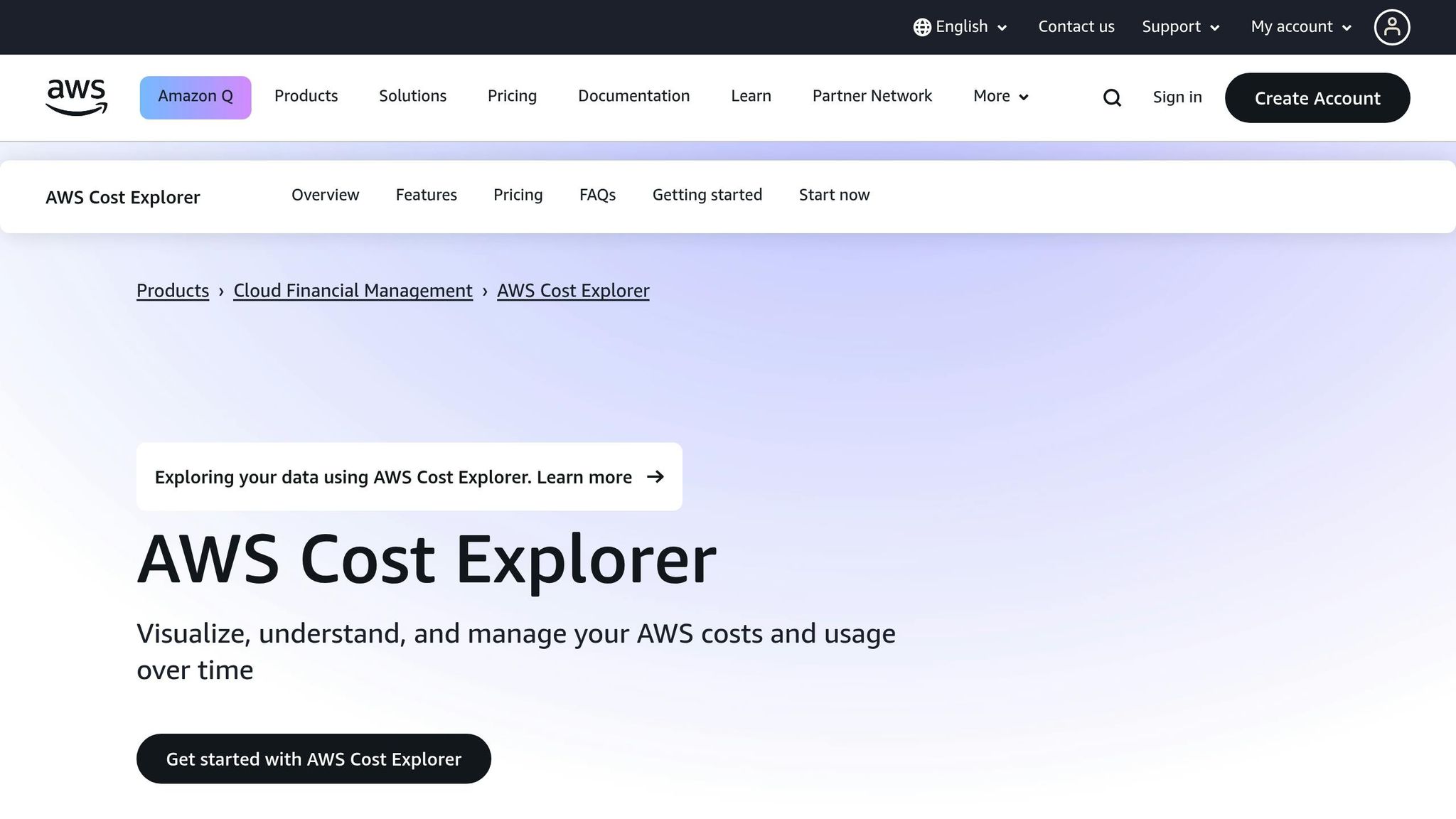
Cost Explorer takes usage data and translates it into cost trends, offering actionable insights. This free tool helps you pinpoint resources that are generating costs without delivering value.
With 13 months of historical data and a 12-month forecast based on current usage, Cost Explorer provides a clear view of where you're spending and where you might be wasting money. Resources with consistent, unchanging costs over time are often good candidates for optimisation or removal.
The tool uses the same data as AWS Cost and Usage Reports, ensuring accuracy in your analysis. You can filter by service, region, or custom tags to focus on specific areas. For SMBs with multiple projects or departments, these filters make it easier to track spending and target specific areas for cost savings.
While the standard interface is free, programmatic access via the Cost Explorer API comes with a small charge of £0.01 per paginated request. For most SMBs, the free version is more than enough for regular cost analysis and idle resource identification.
AWS Trusted Advisor
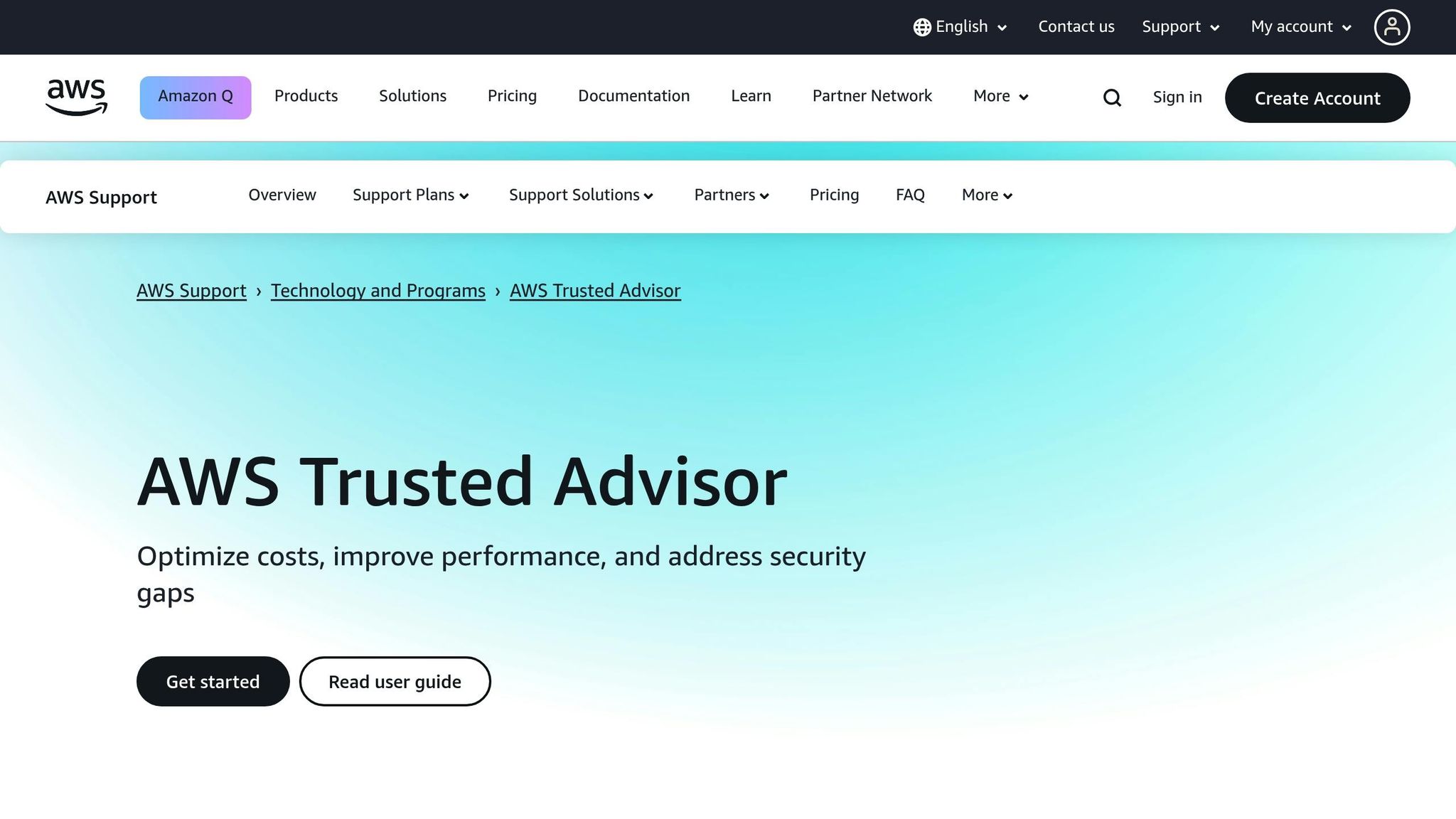
Trusted Advisor acts like an automated consultant, continuously analysing your AWS environment and offering recommendations to cut idle resource costs. Unlike CloudWatch and Cost Explorer, which require you to interpret data, Trusted Advisor provides ready-to-use suggestions.
"AWS Trusted Advisor identifies ways to improve your AWS infrastructure across 5 unique pillars: Security, Performance, Cost Optimization, Fault Tolerance, and AWS Service Quotas."
The tool is particularly effective at identifying underutilised EC2 instances and suggests rightsizing options based on actual usage. It also flags unattached EBS volumes, underused EFS file systems, and inefficient load balancers - common culprits of unnecessary spending.
In addition to identifying idle resources, Trusted Advisor recommends Reserved Instances and Savings Plans based on your usage patterns, which can significantly reduce costs compared to on-demand pricing. It can also analyse data transfer patterns to suggest ways to lower transfer costs and provide storage optimisation tips, such as moving infrequently accessed data to cheaper storage tiers.
Access to Trusted Advisor depends on your AWS support plan. Basic and Developer Support plans include essential checks for security and service quotas. Full access, including cost optimisation features, is available with Business and Enterprise Support.
To make the most of Trusted Advisor, many SMBs schedule monthly reviews of its recommendations as part of their regular cost management practices. This routine can help ensure you’re consistently identifying and addressing unnecessary expenses.
Third-Party Tools for Idle AWS Resources
While AWS provides essential tools for monitoring, third-party solutions can take things up a notch by offering advanced features tailored for managing idle resources. These tools often come with enhanced analytics, automation, and support for multiple cloud platforms - benefits that are especially useful for UK small and medium-sized businesses (SMBs) aiming to get the most out of their cloud investments.
Lucidity
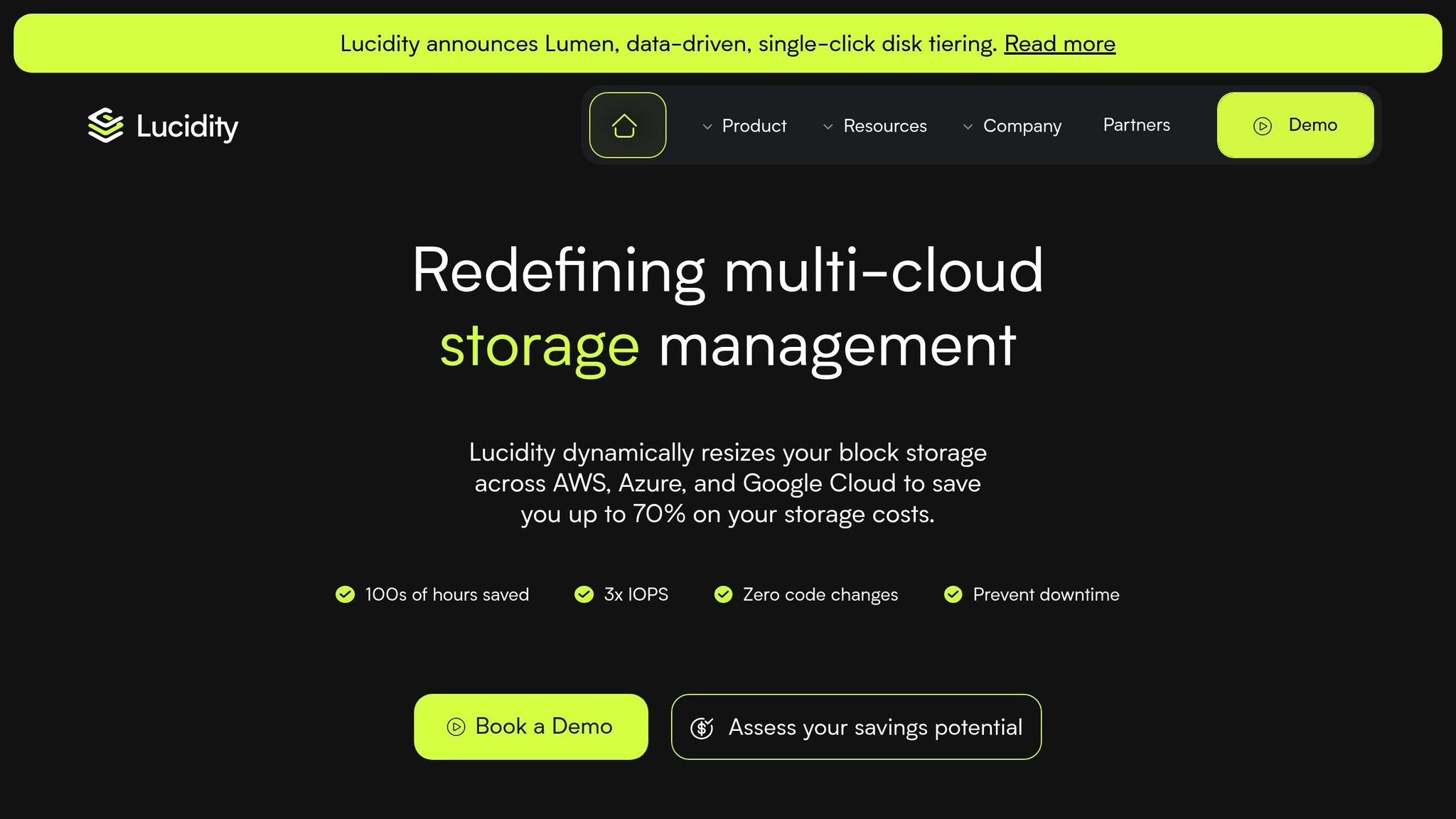
Lucidity focuses on optimising storage costs, particularly targeting Elastic Block Storage (EBS) volumes, which can significantly impact your AWS budget. On average, organisations allocate 40% of their cloud spending to storage, with EBS alone making up about 15% of the total cloud costs.
One of Lucidity's standout features is its EBS Auto-Scaler. Unlike AWS's built-in tools, which only allow for volume expansion, the EBS Auto-Scaler enables both expansion and contraction of storage based on actual usage. This means businesses can avoid paying for unused capacity. Lucidity claims it can cut storage costs by up to 70% while boosting disk utilisation rates from an average of 35% to 80%. For instance, a UK SMB spending £1,000 monthly on EBS could save as much as £700. By continuously monitoring storage usage patterns and adjusting capacity automatically, Lucidity helps businesses avoid unnecessary expenses tied to underutilised storage.
Zabbix
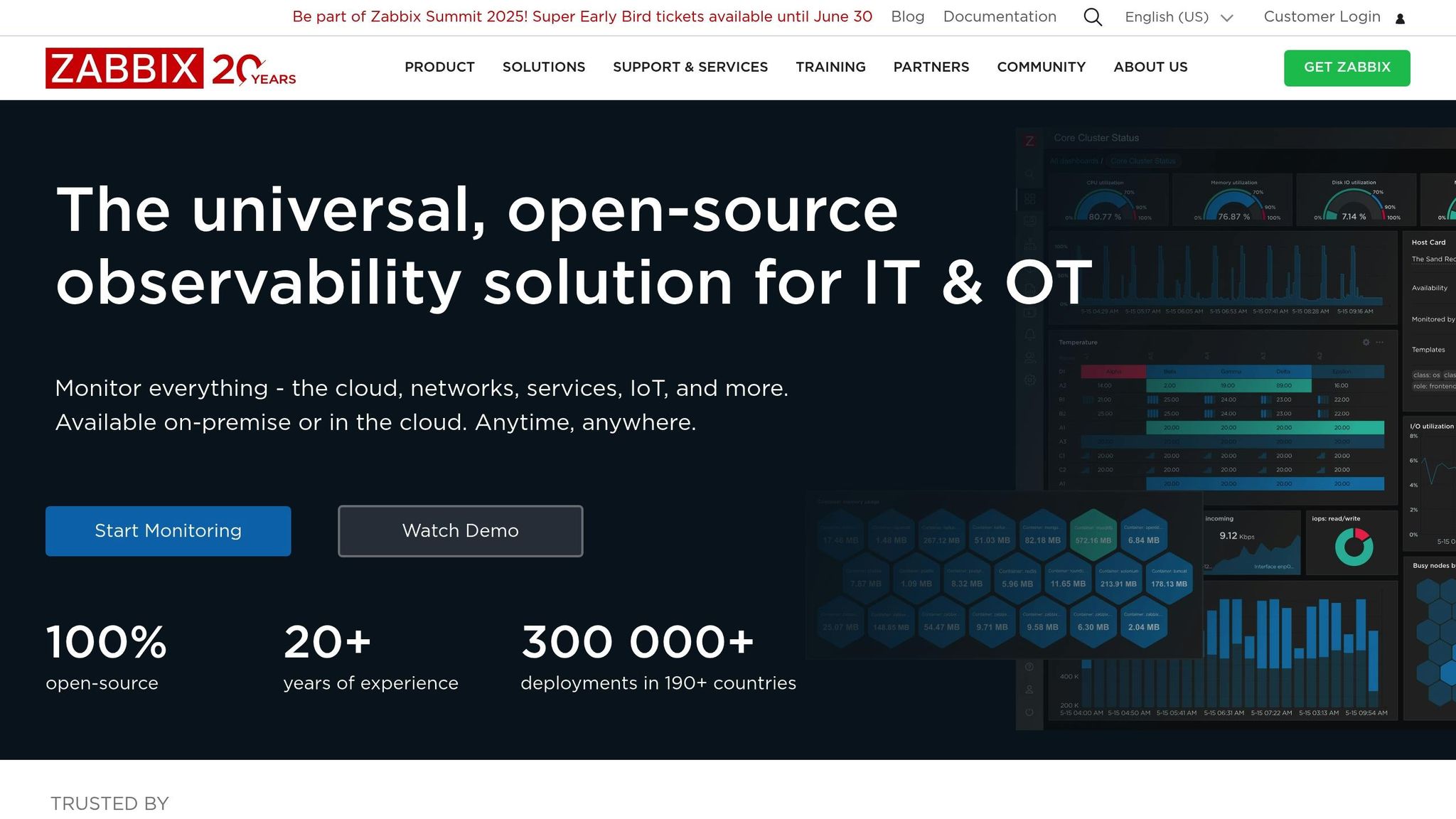
Zabbix is an open-source monitoring platform that offers extensive coverage of AWS services, including EC2, RDS, ECS, ELB, Lambda, and S3. It connects via HTTP and doesn’t require additional scripts or agents, simplifying the monitoring process. While setting up Zabbix involves configuring specific IAM policies and permissions, its pre-built templates make the process much more manageable.
Real-world use cases highlight Zabbix's capabilities. Alf Solli, Senior System Consultant at Eltele AS, shared their experience:
"We chose Zabbix for its scalability, low cost and stability and we noticed the improvements in reliability and efficiency, and we get higher ROI".
Similarly, the Globo Monitoring Team noted:
"We chose Zabbix because it's flexible to monitor everything and it integrates seamlessly into a unified monitoring console. It also enable us to build automations at scale, reducing our toil greatly".
For UK SMBs, Zabbix’s open-source model is particularly attractive as it eliminates licensing fees. Its ability to monitor multiple cloud environments makes it a strong option for businesses using hybrid or multi-cloud setups.
Other Tools Worth Considering
In addition to Lucidity and Zabbix, other third-party solutions offer customisable dashboards and integrated alerts to enhance cost management. These platforms provide detailed analytics and multi-cloud monitoring capabilities, which are becoming increasingly important for businesses looking to scale beyond AWS. Tools that support OpenTelemetry can also help future-proof your monitoring infrastructure, ensuring flexibility as your needs evolve.
For SMBs with limited technical resources, features like automated responses and efficient alert systems are particularly valuable. They simplify the management of complex environments and reduce the need for constant manual intervention. By combining analytics, customisation, and automation, these tools can help businesses maintain control over their cloud costs while improving overall efficiency.
Tool Comparison: Features of Idle Resource Monitoring Tools
Building on our review of individual tools, the following comparison focuses on how each solution caters to the specific needs of UK SMBs.
Selecting the right monitoring tool can significantly impact your AWS cost management strategy. Each solution brings its own strengths, depending on your business goals, technical know-how, and budget.
AWS Native Tools vs Third-Party Solutions
AWS CloudWatch and Cost Explorer integrate seamlessly with AWS infrastructure, ensuring a smooth setup. However, these tools have their limitations. Third-party options often provide broader features and more detailed cost allocation. For instance, market trends reveal that as of June 2025, Zabbix increased its share in the Application Performance Monitoring category from 2.3% to 3.8%, while CloudWatch grew from 1.1% to 1.7%.
| Feature | AWS CloudWatch | AWS Cost Explorer | AWS Trusted Advisor | Zabbix |
|---|---|---|---|---|
| AWS Integration | Seamless | Seamless | Seamless | Requires configuration |
| Cost Analysis | Basic metrics, pay-as-you-go | Detailed cost breakdowns | Free recommendations | No licensing fees |
| Automation | Strong AWS service alerts | Budget alerts and forecasts | Automated recommendations | Customisable automated responses |
| Multi-cloud Support | AWS only | AWS only | AWS only | Yes |
| Ease of Setup | Immediate | Immediate | Immediate | Requires technical expertise |
| Pricing Model | Pay-as-you-go | Free basic, paid advanced | Free with support plans | Open-source, free |
| User Rating | 8.0/10 | Not rated | Not rated | 8.4/10 |
Cost Effectiveness and Technical Capabilities
For businesses with tight budgets, Zabbix is a standout choice. CTO Adil Rajput at Oic puts it simply:
"It is literally free".
As an open-source tool, Zabbix eliminates licensing costs altogether, making it a practical choice for cost-conscious UK SMBs. On the other hand, while CloudWatch offers some excellent features, its rising costs can catch users off guard. Satheesh Papisetty from AXA shares his experience:
"Amazon CloudWatch allows me to set up and view even historical logs, which is one of the features I find valuable".
Zabbix leads in cloud monitoring rankings, while CloudWatch sits at ninth place. Igor Kabish, CTO at Four Nine Agency, praises Zabbix's versatility:
"Zabbix has a lot of features, including monitoring, status updates, and collecting information telemetry from storages and servers as well".
While CloudWatch is unbeatable for AWS ecosystem integration, it falls short for businesses needing multi-cloud support. Zabbix, meanwhile, is appreciated for its scalability and distributed architecture, though its user interface could use some improvement.
Scalability and Performance
CloudWatch’s scalability is fully managed by AWS, making it a low-maintenance option for businesses without dedicated DevOps teams. In contrast, Zabbix offers robust scalability through its distributed architecture but requires more hands-on management. This difference can be a deciding factor depending on your team’s technical expertise.
Decision Framework for UK SMBs
Your choice should reflect your technical resources and long-term growth plans. If you're new to cloud monitoring and have straightforward needs, AWS native tools are a good starting point. On the other hand, Zabbix is ideal for those seeking comprehensive monitoring without licensing fees, provided you have the technical skills to manage it.
Integration capabilities also play a crucial role. Tools that connect with platforms like PagerDuty for incident response, Jira for ticketing, or Slack for team collaboration can streamline your operations and minimise manual work. Ultimately, balancing technical capabilities with budget limitations is key to managing idle resources effectively.
How to Reduce Idle AWS Resource Costs
With a solid understanding of AWS monitoring tools, it’s time to see how they can help you cut down on unnecessary expenses. Research shows that around 30% of cloud spend is wasted due to poor cost optimisation, making it essential for UK SMBs to manage idle resources effectively. Here’s how you can use these insights to save money.
Start by identifying underused resources. Look for instances with consistently low CPU usage or databases that show minimal activity over a reasonable timeframe. Pay attention to idle load balancers and underutilised instances that might otherwise escape notice.
Use automation to stay ahead. Set up AWS Lambda functions triggered by CloudWatch Events to automatically shut down development environments during off-hours. You can also configure CloudWatch alarms to notify your team when resource usage falls below specific thresholds, ensuring you address inefficiencies quickly.
As FinOps Specialist Steven Moore puts it:
"Idle resources drain your budget without adding value. Therefore, eliminating or repurposing these resources can cut costs dramatically".
Optimise storage usage. Analyse EBS volumes for low activity, snapshot them, and delete unnecessary ones. Tools like S3 Analytics can help you identify data that could be moved to cheaper storage tiers. Automating these transitions with Lifecycle Policies can further streamline the process. UK businesses, for example, often store development data in high-performance tiers unnecessarily, which can add to costs.
Focus on database efficiency. Stop idle RDS instances during off-peak times, especially in non-production environments like development or testing. Similarly, pause Redshift clusters that aren’t actively processing queries. For DynamoDB, review your usage patterns and consider switching to On-demand capacity if your workload fluctuates. These adjustments can align your database spending with your actual needs.
Take advantage of AWS pricing models. For workloads that can tolerate interruptions, EC2 Spot Instances can reduce costs by up to 90%. Reserved Instances with a one-year, no upfront commitment can offer savings of up to 42% compared to On-Demand pricing. Compute Savings Plans might save you even more, with discounts of up to 54%.
Prevent over-provisioning with Auto Scaling. Auto Scaling ensures you’re only using the resources you need by adjusting capacity based on metrics like CPU usage or memory consumption. This keeps your costs in check during periods of low demand.
Regular audits keep your setup efficient. Schedule monthly reviews to spot new idle resources and ensure that your existing optimisations are still working. Look out for orphaned snapshots, unused load balancers, and other unnecessary elements as your infrastructure evolves.
Set up governance policies to avoid future waste. Establish clear tagging standards to indicate resource ownership and purpose. Implement approval processes for launching new resources, particularly in production environments, where costs can spiral if left unchecked.
For UK SMBs looking for in-depth guidance, the AWS Optimization Tips, Costs & Best Practices for Small and Medium sized business blog provides detailed implementation steps tailored to smaller organisations managing AWS costs.
Conclusion: Managing Idle AWS Resources for SMB Success
Effectively managing idle AWS resources is a crucial step towards creating a cost-efficient and growth-oriented cloud strategy. Idle resources can quietly rack up charges, so it’s essential for UK SMBs to handle them thoughtfully and proactively.
From our analysis of available tools, it’s clear that the choice depends on your organisation's specific needs. AWS’s built-in tools - such as CloudWatch, Cost Explorer, and Trusted Advisor - offer a solid starting point without extra costs. For more complex environments requiring advanced automation or deeper insights, third-party tools like Lucidity and Zabbix can provide additional value.
The secret lies in striking the right balance for your business. Start with AWS’s native tools to identify the areas where costs are bleeding, then consider incorporating third-party solutions as your requirements grow. Combining both approaches allows you to make proactive adjustments and keep expenses under control.
To achieve lasting savings, regular monitoring and periodic audits are non-negotiable. Automated alerts, clear governance policies, and consistent reviews of your usage patterns ensure that your optimisation efforts stay on track. Many businesses have found success by treating cost optimisation as an ongoing process, rather than a one-time task.
By leveraging the right tools, maintaining consistent oversight, and embracing automation where it makes sense, UK SMBs can turn AWS cost management into a strength rather than a challenge. This approach not only helps reduce unnecessary expenses but also sets the stage for scalable and efficient cloud operations that align with your business growth.
For more detailed advice on managing AWS costs and optimising your cloud strategy, check out AWS Optimization Tips, Costs & Best Practices for Small and Medium sized businesses.
FAQs
What advantages do third-party tools like Lucidity and Zabbix offer over AWS's built-in tools for monitoring idle resources?
Third-party tools like Lucidity and Zabbix offer features that surpass the capabilities of AWS’s native tools. These include more in-depth insights, advanced visualisation capabilities, and streamlined troubleshooting processes, making it easier to pinpoint and resolve issues with idle resources.
Such tools are especially useful in multi-cloud or hybrid environments, where they provide greater compatibility and enhanced functionality for monitoring and managing costs. For businesses aiming to optimise resource usage and cut expenses, these tools often present a more expansive and adaptable alternative to AWS’s built-in solutions.
What are the best ways for UK small and medium-sized businesses to automate cost management and set alerts in AWS?
UK small and medium-sized businesses (SMBs) can better manage their AWS expenses by utilising tools like AWS Budgets and CloudWatch. These tools let you set spending limits and set up automated alerts when thresholds are reached. Plus, they enable real-time monitoring of unusual cost patterns, helping you avoid unexpected bills.
For more detailed insights, third-party tools such as CloudSpend or LogicMonitor offer advanced features like automated detection of anomalies and in-depth cost analysis. These tools make it easier for SMBs to track expenses, get timely updates, and stay in control of their AWS spending. By combining automation with proactive alerts, businesses in the UK can effectively manage their AWS resources and keep costs predictable.
How can businesses optimise their AWS resources to minimise costs and avoid waste?
To make the most of AWS resources while keeping costs under control, businesses should keep a close eye on their usage. Tools like AWS Cost Explorer and the AWS Cost Management suite are great for this. Some effective strategies include adjusting resource sizes to match actual needs (rightsizing), opting for Reserved Instances or Spot Instances, and analysing usage patterns to pinpoint areas of waste.
Regularly reviewing costs and tweaking resource allocations can go a long way in ensuring efficiency and avoiding unnecessary spending. Automating tasks - like shutting down unused resources - can be particularly helpful for small and medium-sized businesses, allowing them to scale operations without overspending.
